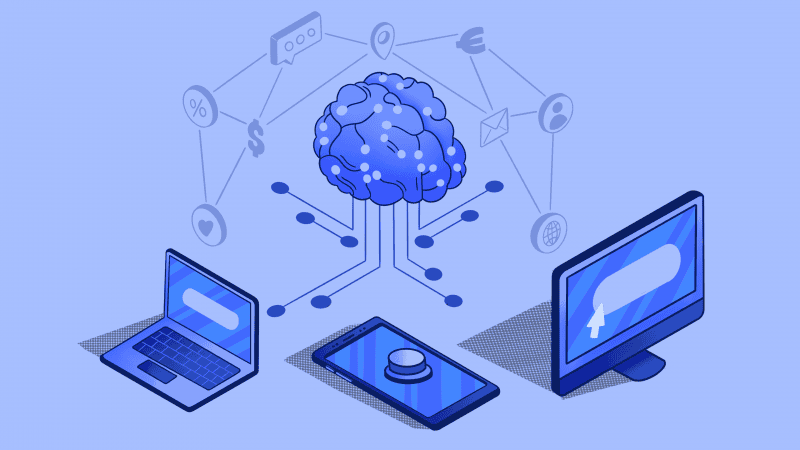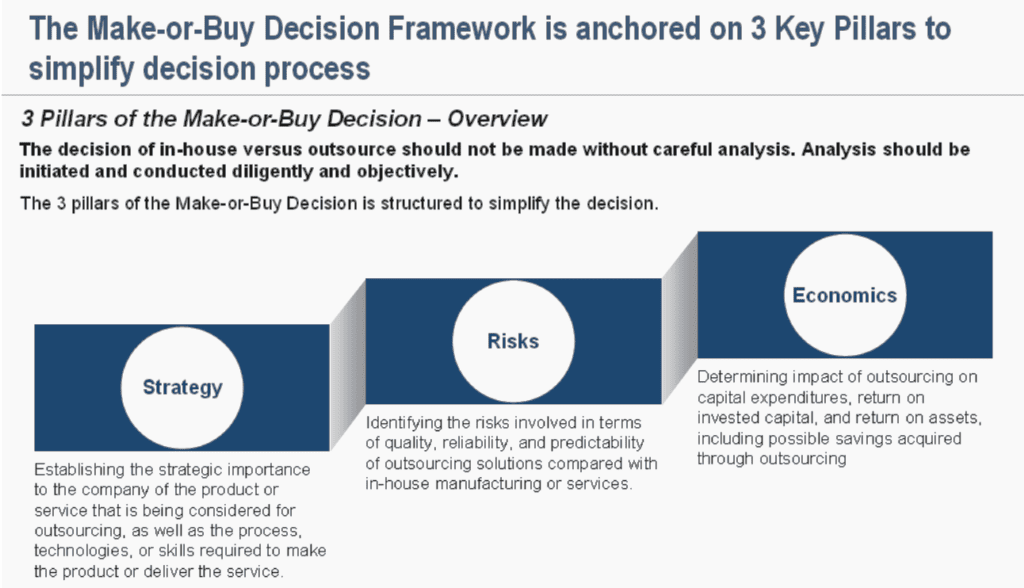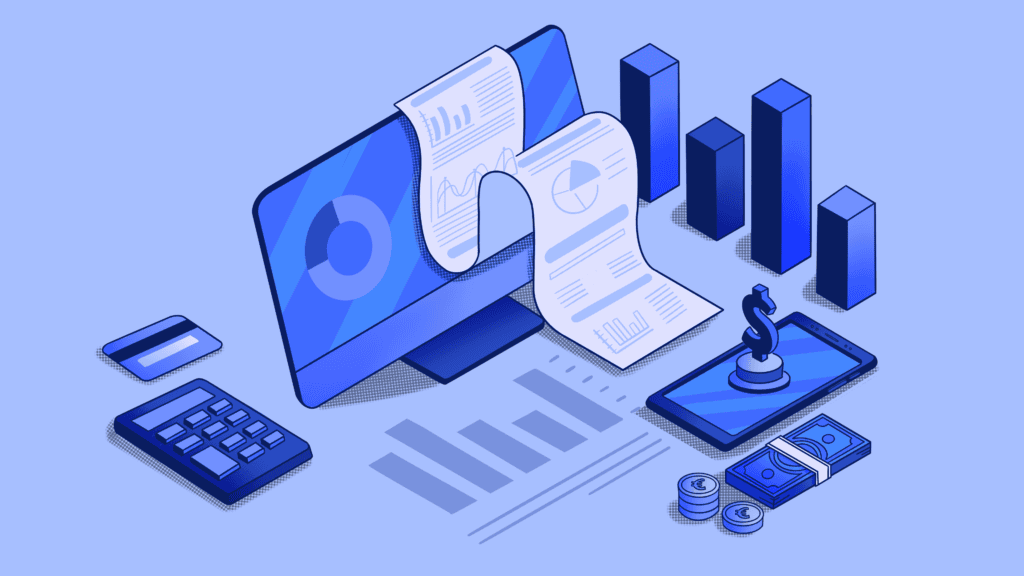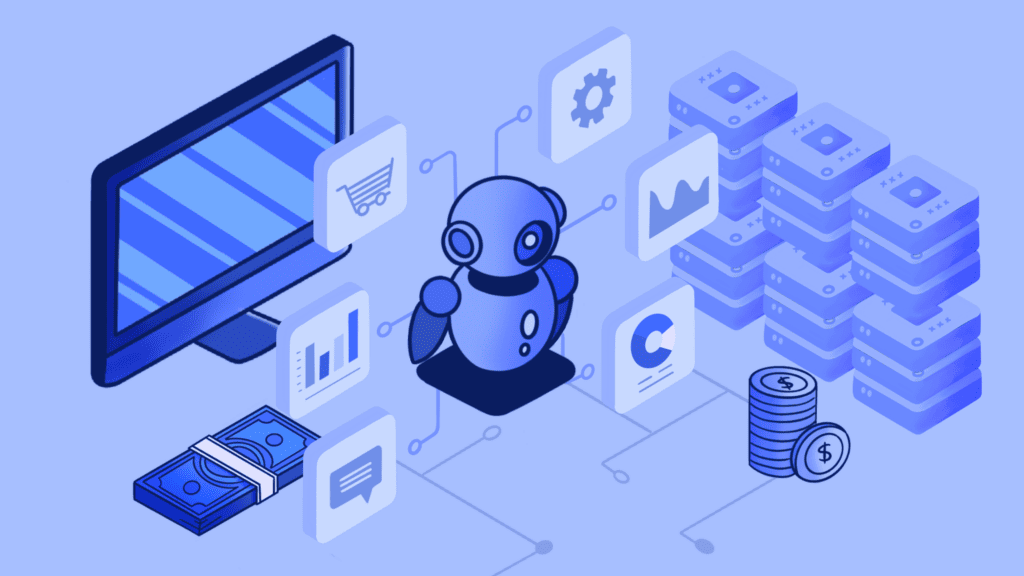The importance of well prepared “make-or-buy” decisions
The dilemma of whether to keep critical functions in-house or outsource them has taken the front lines, as companies come under increasing pressure to cut expenses and improve their return on assets. Especially for IT and technology departments the importance of well prepared make-or-buy decisions cannot be emphasized enough. According to the Entrepreneur, most organizations reported failures among their AI projects, with a quarter of them reporting up to a 50% failure rate.
Make or Buy?
A make-or-buy decision is an act of choosing between manufacturing a product in-house or purchasing it from an external supplier.
The definition of a make/buy decision is self-explanatory, and in the specific use case of AI, the options are as follows:
Make: Implement machine learning models on personally collected data from scratch — this includes building neural net architectures, writing custom algorithms, leveraging other ML methods, and building APIs to serve the results.
Buy: Pay for the use of existing APIs/ Advanced software and interact with existing service to achieve company objectives — this includes, but is not limited to, Microsoft Azure or Amazon AWS AI services for CV, NLP, and many other tasks.
The decision-making process
The weigh-in of “Make vs. Buy” should not be made without an analysis.
Following the model shown below, companies can utilize a three-step method to come to a decision;
- Determining the strategic advantage
- Identifying the risks
- Calculating the economics
Strategy
Understanding the smartest way to implement AI in your business will determine the success of your organization’s AI strategy. Thomas Malone, the founding director of MIT’s Center for Collective Intelligence told Forbes:“It comes down to how strategic and unique to your company are your applications of AI likely to be”.
To determine this, you have to answer a few essential questions. The first ones concern your strategic objective:
Are you planning on using AI for a transformational “out of this world” innovation, or do you want a reasonably easy-to-accomplish enterprise application that will deliver immediate value?
Companies have to be brutally honest with themselves when answering this question to find the solution that works best towards their business goals. If the goal is to help you optimize standard processes, then it’s very likely that building your own AI will leave you at a disadvantage.This means that there will be an already existing market providing different solutions for it. In this case, you’ll be wasting money and time training algorithms and data scientists to build AI that is already available to you.
How does this decision affect your competitive position?
When a company contemplates improving their competitive position using AI, they typically think about doing something internal to transform their posture—like mastering a new technology or developing an innovative process. Before opting for this choice, managers have to put the function in question in relation to the company. A good example where insourcing has been crucial to gain a competitive edge is the AI speech recognition software used by Amazon for Alexa. Amazon can only compete in this space when they are on the forefront of innovation. Now, if we look at different functions in other companies, it’s a completely different ball game.
Against common belief, outsourcing certain functions does not directly mean losing competitive leverage. Yes, it’s still utilizing a tool that others have access to. Not using it however, could then become the disadvantage in itself. Off-the-shelf AI solutions can be a safer route for many functions, and can also be implemented directly. That is, it can swiftly enter and execute within markets right away.
A strong example are advanced pricing solutions. Price automation is a must-have for online retailers nowadays. To build an in-house solution that forecasts, optimizes and automates pricing takes a lot of time, money and expertise. Outsourcing your pricing provides you with a service to improve your day-to-day operations while simultaneously increasing revenue and profitability. So, it helps you leverage your competition as it makes you a strong player in the game.
Safeties and Risks
There are many risks as well as benefits coming with both “Make or Buy” options that you have to consider. To get some insight, you have to ask yourself:
Are your resources strong enough to build your own high functioning AI ?
The implementation of machine learning requires considerable experience and skills, as this type of development is extremely complex. Frequently, an in-house team significantly lacks the resources and expertise to accomplish these demanding tasks making it risky to go with this option. Companies also have to consider that talented data scientists are a very rare resource and hard to get by. At the same time we have a large amount of potential use cases in industries like retail to apply AI technology and improve processes. This makes it even more important to focus your resources on AI topics that really matter.
Another factor that reduced the risk of error is the flexibility that comes with outsourcing AI. Building your own AI often means employing a fixed team that won’t be dynamic with the workload. On the other hand, outsourcing allows you to quickly scale depending on the current business load.
Economics
Lastly, take a moment and think:
Where do I get the best value for my money?
Even though an in-house team can appear to be a predictable cost factor, many hidden costs arise which need to be considered. Building a data science and machine learning team in a company is the business equivalent of dipping your toes in unknown waters. It’s a practice with a lot of trial and error. As a result, this could become an HR nightmare and cost a lot of money. Outsourced companies will demand a fixed cost that is agreed on pre-implementation. So, you will be able to strategize and budget with fixed numbers. Furthermore, AI is impossible without the right machinery and equipment. Gadgets and insurances that have to be acquired to get a “job-well-done” will end up piling on more cost. Outsourcing makes sure that you get top-notch equipment that will help you leverage the market.
Conclusion
Many businesses are clamoring to get their AI strategies together. So, understanding how to implement artificial intelligence is vital for strategizing enterprise operational goals.
Implementing AI into any production system requires deep levels of expertise across a team of data scientists and machine learning engineers. Though it can be enticing for IT departments to build their own AI systems, it is often more useful to consider what options already exist. This can help avoid many costs, headaches and save resources.




